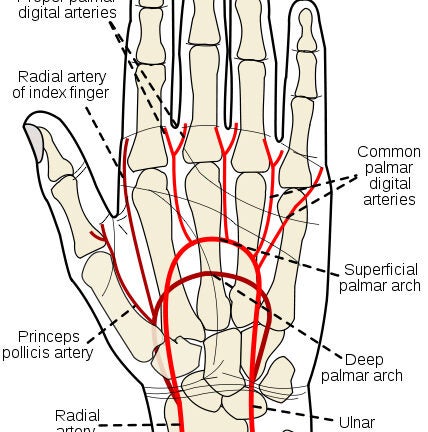
Thanks to microsurgery, physicians at the Keck School of Medicine of USC can achieve a great functional outcome for nerves and muscles in the limbs.
Tell it to the hand
Holding a spoon, a cell phone or a baby all require bending and straightening the hand and arm. Most of the time, people take the ability for granted. But when that functionality is damaged or missing, combining microsurgery with orthopaedic surgery may help.
Using microsurgery to transplant a bundle of nerves, muscles and blood vessels restores not only motion but also the sense of touch, said Milan Stevanovic, professor in the Department of Orthopaedic Surgery at the Keck School of Medicine of USC.
“We’re able to perform cutting-edge microsurgery and achieve a great functional outcome,” Stevanovic said.
At Keck Hospital of USC, Children’s Hospital Los Angeles and Los Angeles County+USC Medical Center, Stevanovic treats a variety of hand and upper extremity problems in patients ranging in age from a couple of days to more than 90 years old.
For example, Stevanovic and his colleagues repaired and restored function in the forearm of a 7-year-old child who had been unable to flex and extend his fingers since the age of 3 due to an injury. The team accomplished this surgical feat by transplanting muscles with nerves and blood vessels from the child’s leg to his injured arm.
Because of surgery like this, a college student with a severe brachial plexus injury that kept him from bending his elbow is now planning a medical career. The plexus is a network of nerves that originates near the neck and shoulder.
“It’s really amazing that we’re able to take children without fingers and transplant their toes to their hands, significantly improving their motor function,” he said. “These procedures change children’s lives.”
Recognized internationally for his expertise in treating injuries of the hand, wrist, elbow and shoulder, Stevanovic has extensive experience with patients who have nerve injuries, trauma, burns, tumors and rheumatoid arthritis.
A leading authority on reconstructive microsurgery and limb and digit replantation, he recently returned from Japan, where he was invited to speak at a meeting of the Japanese Society of Reconstructive Microsurgery, attended by almost 1,000 participants.
The first successful replantation of a completely amputated finger occurred in Japan in 1965, and Japan is considered to be “the cradle of microsurgery,” Stevanovic said. “They absolutely dominated the field for a long time, so I was truly honored that they invited me to be a guest speaker at the annual meeting.”
At the conference, Stevanovic spoke about upper-extremity reconstruction with free functional muscle transfer. He also discussed the application of microsurgery in elderly patients — those over the age of 70. His studies have found that the success rate for reconstruction of the lower and upper extremities in 70- and 80-year-old patients is almost the same as in people who are 25 as long as the older individuals do not have comorbidity, such as arteriosclerosis, heart disease or diabetes.
Stevanovic has conducted research on free functional muscle transplantation for extremity reconstruction since 1983, when he began his training in microsurgery at Duke University. He came to the United States from the University of Belgrade in Serbia, where he completed his medical degree. He completed a fellowship in hand surgery at USC before going to Duke and then returned to Belgrade to serve as chief of the hand, upper extremity and replantation team.
On the USC faculty since 1993, Stevanovic currently serves as director of the Joseph H. Boyes Hand Surgery Fellowship, the oldest such program in the country. The program usually has 60 to 80 applicants each year for two fellowship positions. Former fellows include five past presidents of the American Society for Surgery of the Hand.
“Fellows are able to gain a wide range of experiences in a good academic setting with outstanding clinical exposure,” Stevanovic said.
“The future of microsurgery lies in advances in super microsurgery, as well as in the creation of more powerful microscopes and thinner needle and suture materials,” he explained. “Even more promising,” he added, “is the combination of these developments with immunology, stem cell research and gene therapy.”
Despite the fact that the field of microsurgery will inevitably expand in the future, “the USC orthopaedic department is currently doing a remarkable job with microvasular reconstruction,” Stevanovic said.
For a 16-year-old patient with a malignant tumor on her leg, surgeons used vascularized bone from the opposite leg to fill the gap.
“Twenty years ago, physicians would have most likely amputated her leg, but thanks to developments in microsurgery, today her limb can be saved.”



